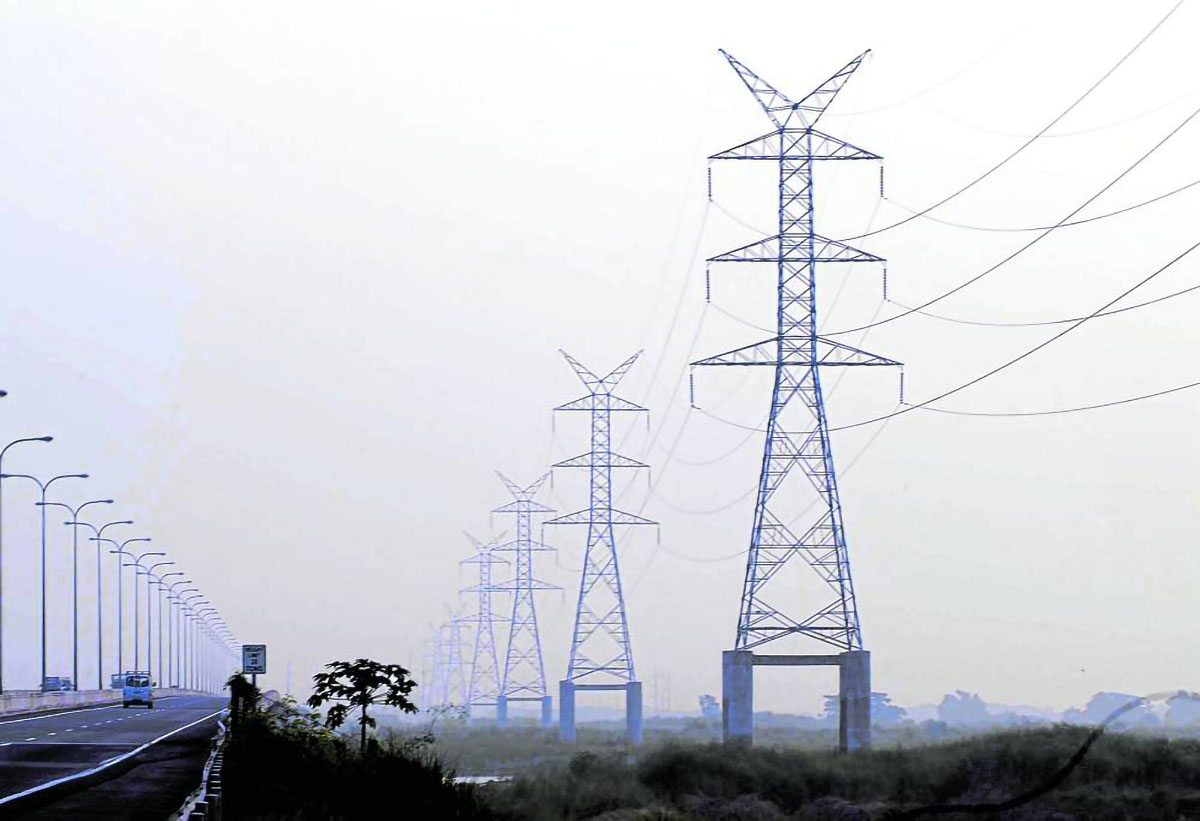Luzon, Visayas in second week of red, yellow alert

The NGCP transmission lines (Photo from NGCP’s Facebook page)
Red and yellow alert levels have been hoisted across the archipelago—mostly in Luzon and the Visayas—for two weeks now as several power plants remain uncommissioned.
National Grid Corp. of the Philippines (NGCP), which operates the country’s transmission backbone, raised the red or yellow alert in the three regions for extended hours on Friday.
READ: Nationwide red, yellow alerts raised as power supply further thins
The Luzon grid was placed under a yellow alert from 1 p.m. to 5 p.m. and from 7 p.m. to 10 p.m.
The NGCP issued a red alert in the Visayas grid from 3 p.m. to 4 p.m. and a yellow alert from 1 p.m. to 3 p.m., 4 p.m. to 7 p.m., and 8 p.m. to 9 p.m.
Article continues after this advertisementEven the Mindanao grid was placed under a yellow alert for the second time this week from 1 p.m. to 3:06 p.m.
Article continues after this advertisementREAD: Senate probe set as power rates doubled during yellow, red alerts
“[The] extension of yellow alert intervals for Luzon and declaration of yellow alert in Mindanao is due to forecasted increase in demand,” the grid operator said.
“The red alert in Visayas grid is also due to increased demand and decrease in power exported from Luzon,” it added.
Supply loss
Between April 16 and April 26, the NGCP issued a red alert in Luzon five times and a yellow alert eight times.
In the Visayas, the grid was placed under a red alert five times and a yellow alert eight times.
Meanwhile, in Mindanao, the NGCP raised a yellow alert in the region two times and this is the first time such a notice was made this year.
The NGCP explained a red alert is issued when the power supply is insufficient to meet the consumer demand and can lead to power interruptions.
A yellow alert is raised when the operating margin is insufficient but it does not necessarily lead to power interruptions.
In the case of Luzon, the operating margin should be equivalent to 668 megawatts or the capacity of the largest power plant in the region.
According to the NGCP, power plants in Luzon still have an available capacity of 14,535 MW, still enough to cover the peak demand of 13,751 MW.
The Visayas power grid also has an available capacity of 2,791 MW, which remains adequate to sustain the peak demand of 2,530 MW.
The Mindanao grid, meanwhile, has an available capacity of 2,861 MW, a megawatt higher than the peak demand of 2,680 MW.
In Luzon, 22 power plants had been on forced outage, with two others running on derated capacity, resulting in a 1,512.7-MW supply loss.
In the Visayas, 19 power facilities had been offline while eight others reduced their output, losing a total of 604.1 MW of supply.
Forecast until May
The Department of Energy (DOE) on Thursday described the country’s power situation as a “challenge” and a “calamity,” but it stopped short of saying the entire nation is already in a “crisis” because of this particular scenario.
Energy Undersecretary Rowena Cristina Guevara said earlier red and yellow alerts might be raised in the coming weeks until mid-May, especially if major power plants would go offline.
“What we expect is that in the next few weeks until middle of May that we are going to have yellow alerts and possibly red alerts in some areas,” Guevara said at a virtual briefing.
“If none of our plants are going to go offline, then perhaps it’s just yellow alert but as you’ve noticed in the last week, for example, several plants went offline and that resulted in having red alerts. That one we cannot predict,” she said.
Energy Secretary Raphael Lotilla did not categorically answer whether there is a power crisis in the Philippines but said only it has affected other key economic sectors.
“Well … it remains a challenge, right? And if we look at the impact of the El Niño and the El Niño phenomenon has created problems not only in the energy sector but in the agriculture sector, in water, in health, education and so on,” Lotilla said.
“These are indications of a natural calamity and therefore, the local government units have already, in many areas of the country, already declared such. So, we are recognizing that as a fact,” he said.
Lotilla said, “It’s a calamity and we are adjusting, we are responding to it as needed.”
Power projects
Amid the successive issuances of red and yellow alerts in this month alone, he said the moratorium on the development of new coal-fired power plants would remain.
The agency also said at least 4,164.92 MW of power projects—a combination of renewable energy and conventional power plants mostly located in Luzon—would go online this year.
Its data showed power projects with a combined capacity of 161.20 MW are now in full commercial operation while 835.888-MW power facilities are under testing and commissioning.